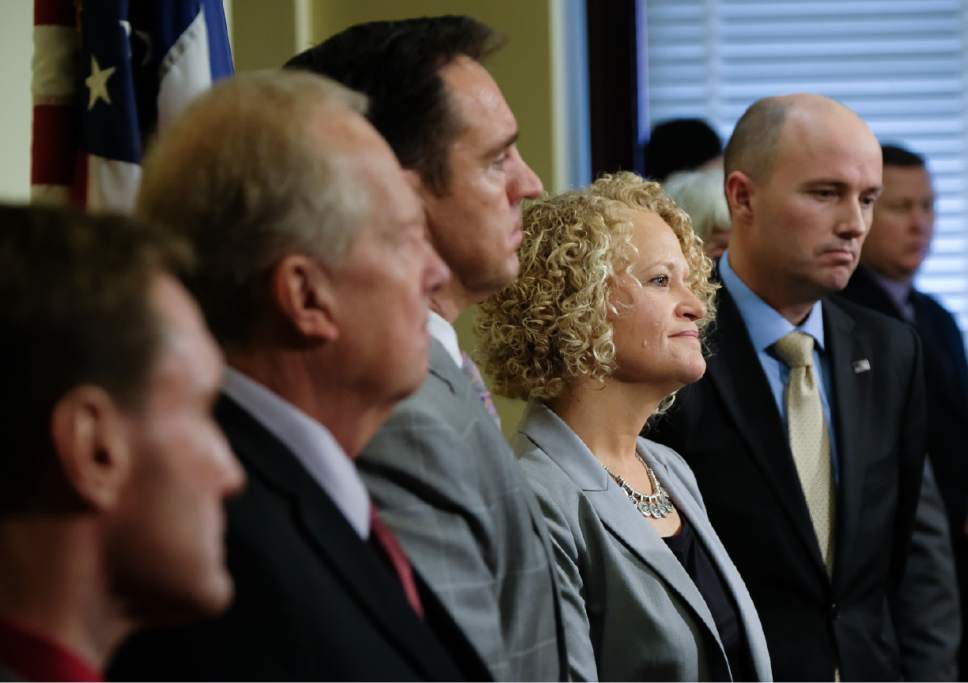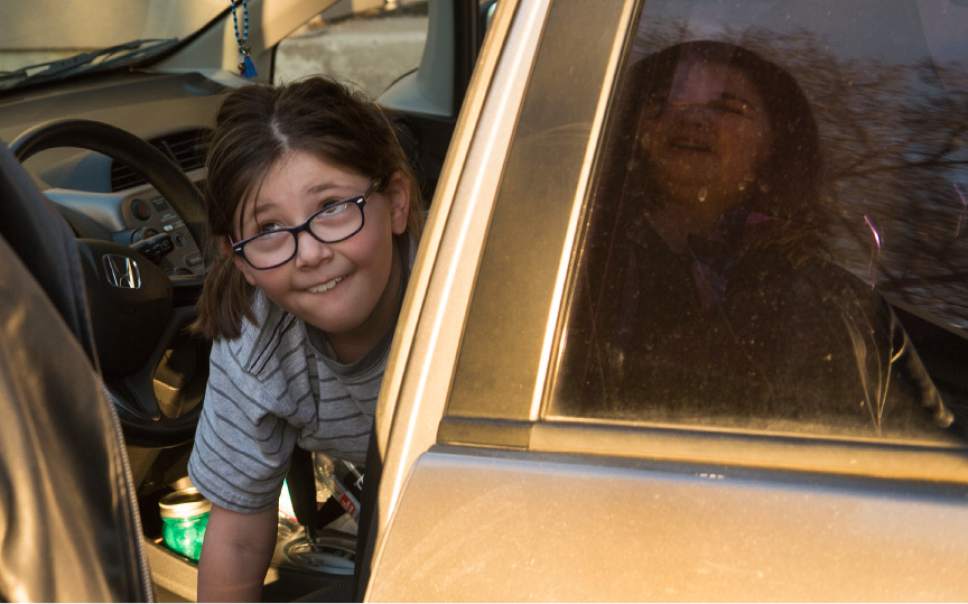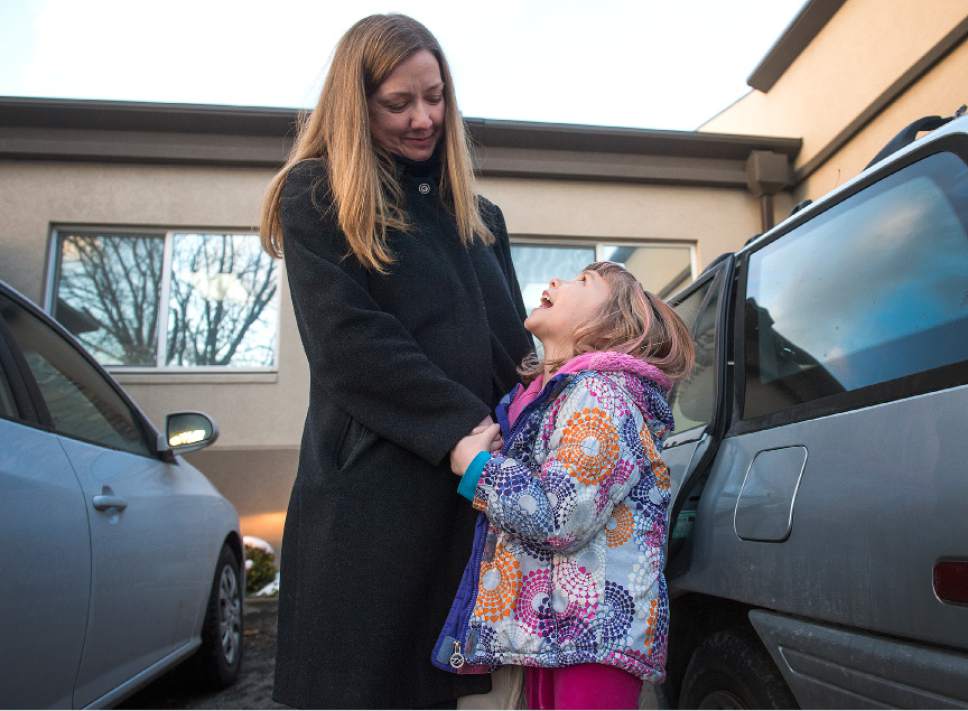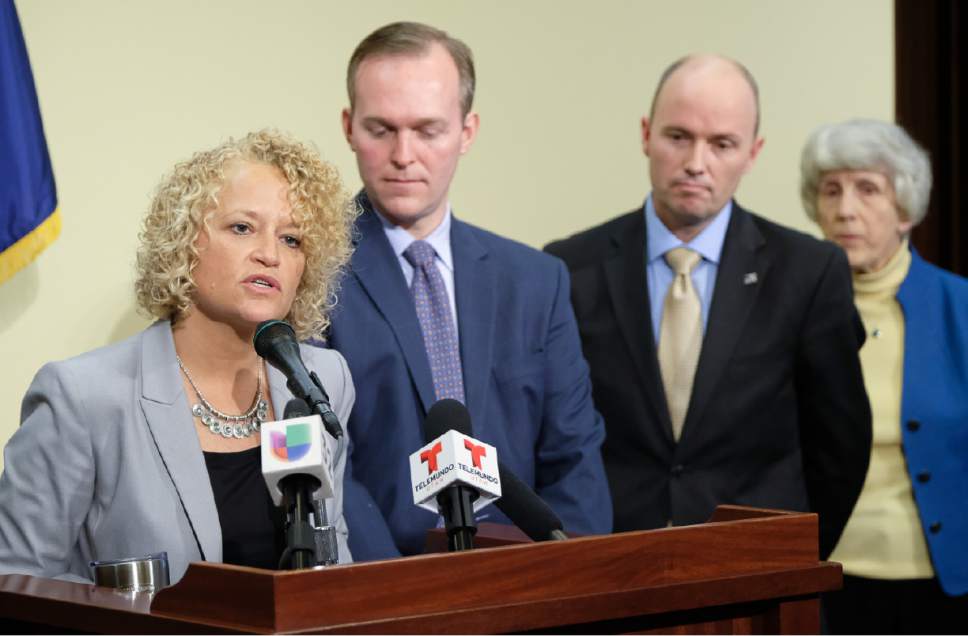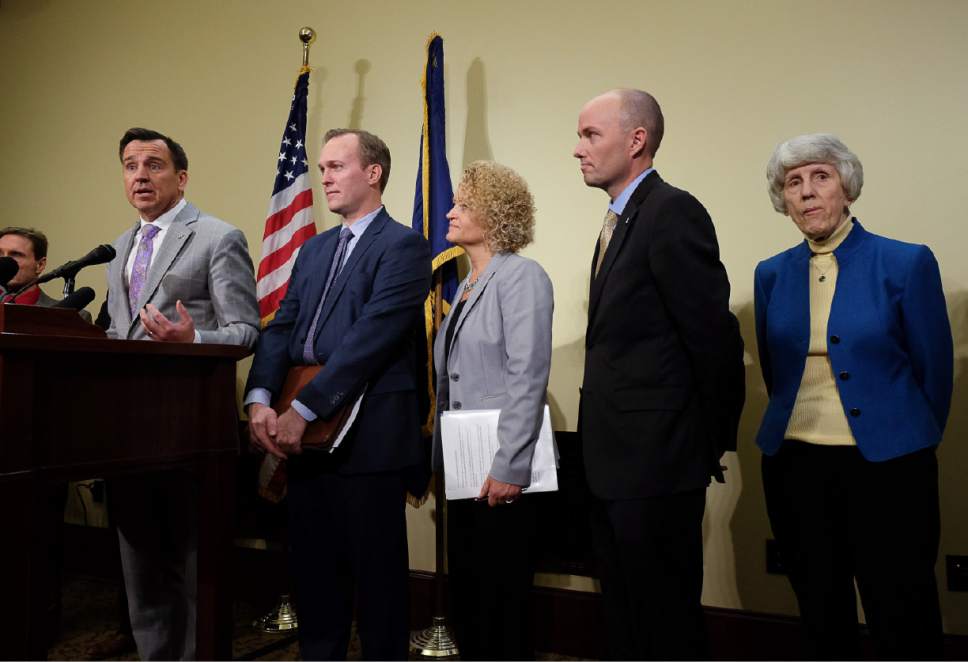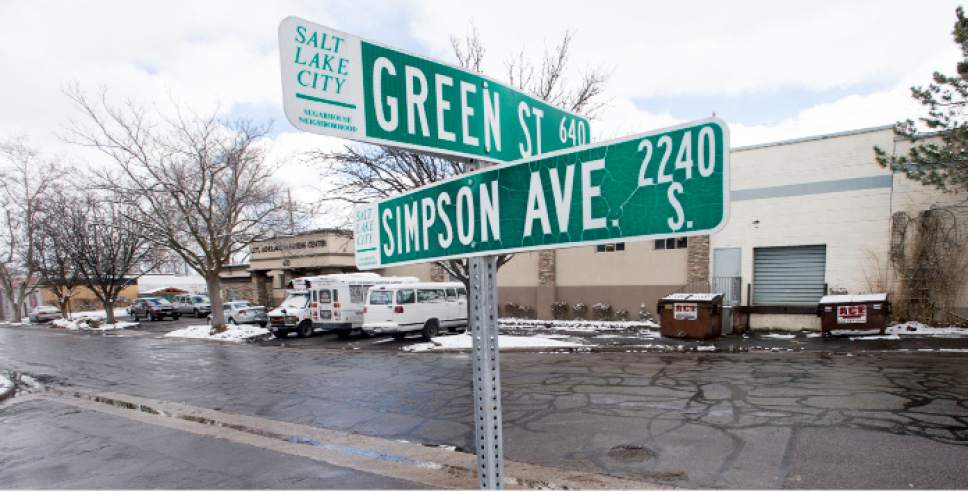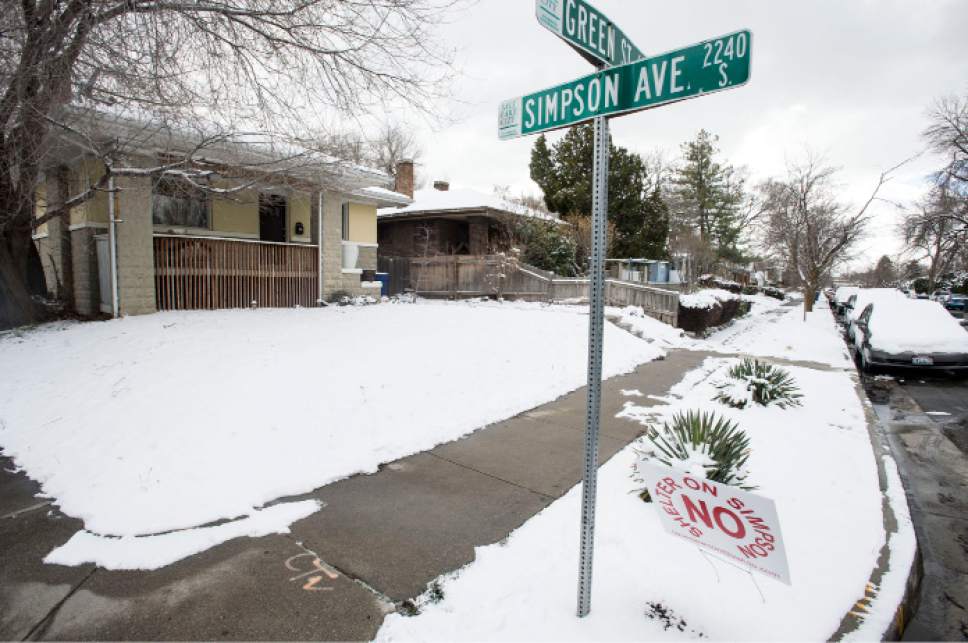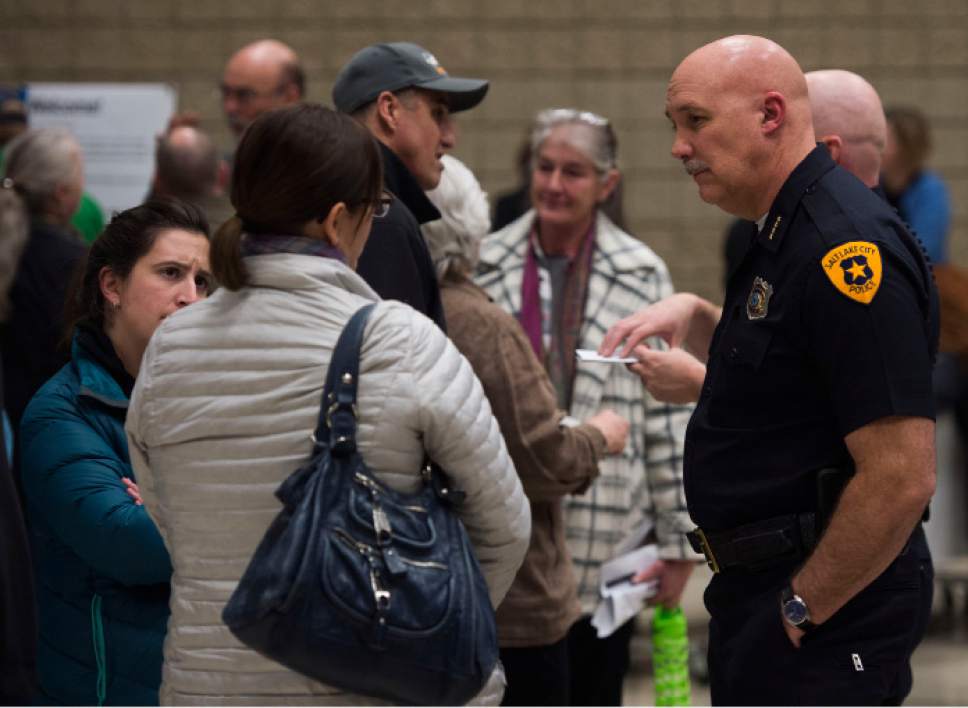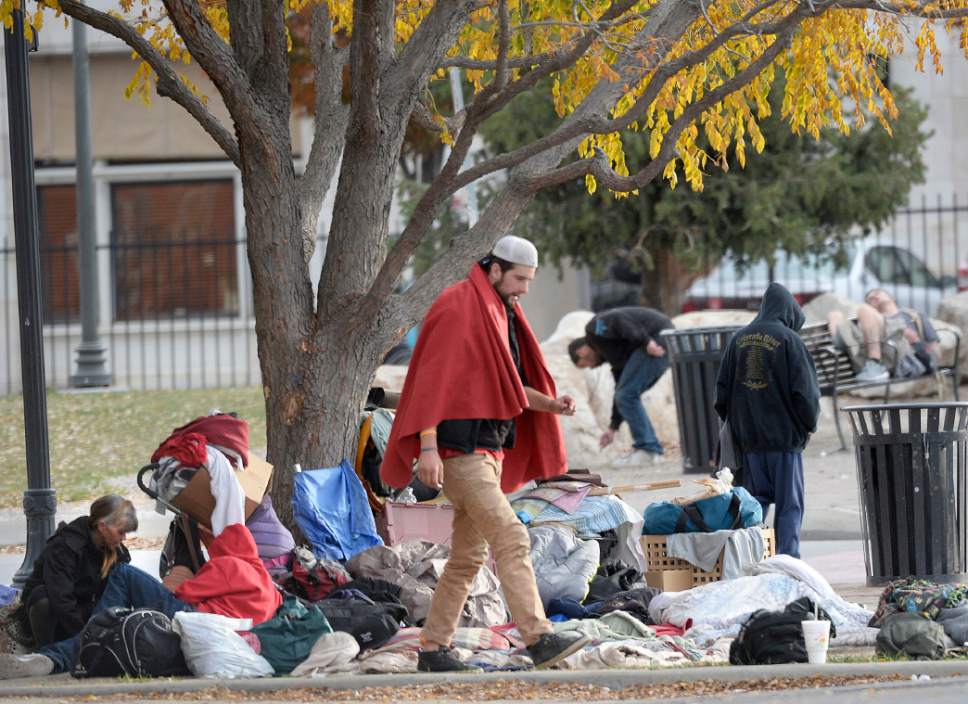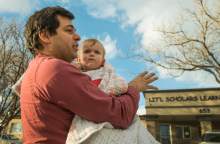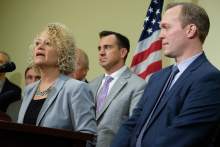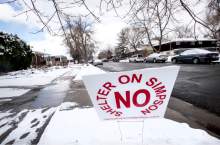This is an archived article that was published on sltrib.com in 2017, and information in the article may be outdated. It is provided only for personal research purposes and may not be reprinted.
State and local leaders gathered Friday to present a newly united front on homelessness — this time with big concessions to Salt Lake City Mayor Jackie Biskupski, Rio Grande business interests and a vocal contingent of Sugar House residents.
The previous model — unveiled by a similar cast of elected officials in September — called for four 150-bed homeless shelters in Salt Lake City that would be loosely tied to the phaseout of a 1,100-bed emergency shelter at 210 S. Rio Grande St.
Under the new plan, Utah's capital city will house just two 200-bed shelters at 131 E. 700 South and 275 W. High Ave. Another shelter will now be sited outside city limits in Salt Lake County, and the Rio Grande shelter will have a "hard close date" of June 30, 2019, said House Speaker Greg Hughes.
Nixed are planned Salt Lake City shelters at 653 E. Simpson Ave. and 648 W. 100 South.
Leaders heralded consensus after a contentious discussion between the city and county that has often played out in the media.
Senate President Wayne Niederhauser said it was like "keeping jackrabbits on a flatbed truck."
Hughes, who has made homelessness a top priority while wrangling the state's highest-ranking Democrats, said the jackrabbit scenario sounds "easy" by comparison.
A day earlier, Hughes doubted whether they'd be able to announce a plan. City and county leaders hashed out details until 10 p.m. Thursday night, he said.
"It has been absolutely miserable."
Friday's news conference was "the best moment from the time we decided to do something and get this done."
—
Simpson Ave. • Residents and business owners near 653 E. Simpson had been the most vocal opponents of the previous plan, pleading with city leaders to withdraw the site.
The Sugar House property is the easternmost of the four chosen in mid-December, includes four commercial tenants and abuts a neighborhood of single-family homes. Critics also said the city erred by agreeing to pay $7 million for the 2.82-acre property.
Friday's news was met with elation by Chris Sveiven, who had helped organize testimony from neighbors that persisted during two months' worth of public meetings.
"It was like taking the soul of our little neighborhood," said Sveiven, who lives less than 100 feet from the proposed shelter and whose 19-month-old son, Weston, is on the waiting list at the popular Lit'l Scholars day care at 653 E. Simpson Ave.
"If we wouldn't have gone and made as much noise as we did, there's no way they would have shifted back to two sites," Sveiven said. "To say I'm relieved is an understatement."
Leaders say the decision to scrap the Simpson Avenue site was informed by Department of Workforce Services data that suggested a currently operating 300-bed shelter in Midvale will be sufficient for homeless families.
City Spokesman Matthew Rojas said 653 E. Simpson Ave. "was always best used for women and families, which is why it's not one of the sites selected."
City Councilwoman Lisa Adams said she was "pleasantly surprised" after having been out on a limb politically in her campaign to have the site — which is in her district — withdrawn.
She initially supported the site but changed her mind after a constituent response that eventually included more than 700 emails.
"I was always hopeful," Adams said. "I kept thinking, 'We can find a solution here.'"
Salt Lake County Mayor Ben McAdams had previously given Adams a glimmer of hope when he said Midvale could handle the family population. Proven right, he had little reward. The new plan calls for him to lead a siting decision — with its expected accompanying controversy — by March 30, no less.
McAdams recalled that he once said he empathized with Biskupski for the tough choice of siting a homeless shelter.
"Now I think I'm a little bit beyond empathy," he quipped.
Biskupski implied during her speech that Salt Lake County's resource center would serve single men — regarded as the highest-risk population — while Salt Lake City would take single women and a gender-segregated shelter that would serve both men and women.
Her deputy chief of staff, David Litvack, clarified later that there were "ongoing conversations" about which shelters would serve which population.
—
The Road Home • Biskupski and McAdams had reached what the latter termed an impasse in January over the closure of The Road Home-operated shelter at 210 S. Rio Grande.
Biskupski said the emergency shelter should close when the others come online, leading some homeless service providers to wonder about the 500-plus-bed difference between the capacity of The Road Home-operated shelter and the new buildings.
McAdams had said that the county-led service model — through treatment and housing efforts — would whittle away at the need for beds, but that he couldn't commit to an arbitrary closure that might leave some homeless people unsheltered.
Friday, McAdams said the Legislature's apparent support for treatment funding and better data had convinced him that a mid-2019 closure was reasonable.
No explanation was offered at the news conference for the changed fate of city land at 648 W. 100 South.
Unlike 275 W. High Ave. and 700 South, that site would have required zoning changes and an additional public input process before ground could be broken.
Hughes said McAdams was among a group that favored dropping from four overall sites to three to reduce costs.
Given that Salt Lake City leaders had agreed on four, 150-bed sites in part to reduce the impact of each site on affected communities, Hughes said, "it would be bad faith" to ask the city to take on all three of the 200-bed sites. So the county stepped up, he said.
A group of business leaders promoting a revitalized Rio Grande district had worried that a shelter blocks from 210 S. Rio Grande would sustain the homeless population in and around Pioneer Park.
A joint statement in support was released Friday by the nonprofit Salt Lake City business group Downtown Alliance and the Pioneer Park Coalition, which two years ago pressured McAdams and then-Salt Lake City Mayor Ralph Becker to rid the area of the rampant lawlessness associated with the current emergency shelter.
—
Moving forward • Salt Lake City Council member Derek Kitchen, whose district includes the site, said his feelings were "mixed."
"Just a week and a half ago, we were all giving the mayor assurances that we were behind her wholeheartedly on the four sites," he said. "In some ways, I kind of feel like I spent a lot of political capital standing behind her, especially on Simpson Avenue."
Fellow City Council member Erin Mendenhall likewise expressed surprise at the announcement, though she said she could appreciate the logistical difficulties of looping in an entire council when the list of stakeholders was already so long.
The city's plans for 653 E. Simpson were not immediately clear Friday.
Council Chairman Stan Penfold said Friday that he'd be inclined to back out of the $7 million purchase agreement and forfeit the $10,000 earnest deposit.
His vice chairman, Charlie Luke, cited a potentially costly environmental study of the property — which once included uranium mill tailings and was home to a dry cleaner — as another reason to renege.
"If I were calling the shots I would have already been on the phone with our real-estate team and moved forward with voiding that purchase agreement today," Luke said.
Lit'l Scholars owner Pat Marino said he had hired a real estate agent to explore possible relocation and anticipated putting in offers in the next couple of weeks.
"I'm glad I hesitated," he said with a laugh Friday.
Mazen Bahsoun has been bringing his 18-month-old daughter to Lit'l Scholars for four months. Before the baby was accepted at the day care, his mother, father and sister took turns flying to Utah from Lebanon to babysit her while Bahsoun and his wife went to work.
"It's a relief that she's going to be staying here," he said Friday outside of the business. Bahsoun wrapped a white blanket tight around Nour's face in the cold air. "It's really hard to find a day care in Salt Lake."
Hughes used Friday's spotlight to tout related legislative efforts from GOP Reps. Mike Noel and Steve Eliason — who are working on additional jail beds for shelter drug dealers and ongoing service funding, respectively.
Rep. Joel Briscoe, D-Salt Lake City, was also on hand after his bill to enhance drug dealing penalties in and around shelters received a favorable committee recommendation, though no Hughes shoutout.
House Majority Whip Francis Gibson's HB436 will finalize funding for the centers, according to a news release from Hughes' office.
The city and county had sought $27 million over three years for the shelters. A city RFP estimated that 150-bed shelters would cost about $10 million each to build.
Longtime homeless advocate Pamela Atkinson said she was encouraged that key players are now on the same page, and said it was good news from another perspective that's less often considered.
"The bottom line is this has made our homeless friends feel, 'Hey, I'm important, people care about me,'" she said.
"They're very pleased with what's being done in many ways, but the most important thing is they feel cared about."
Twitter: @matthew_piper
— Reporter Courtney Tanner contributed to this report.



